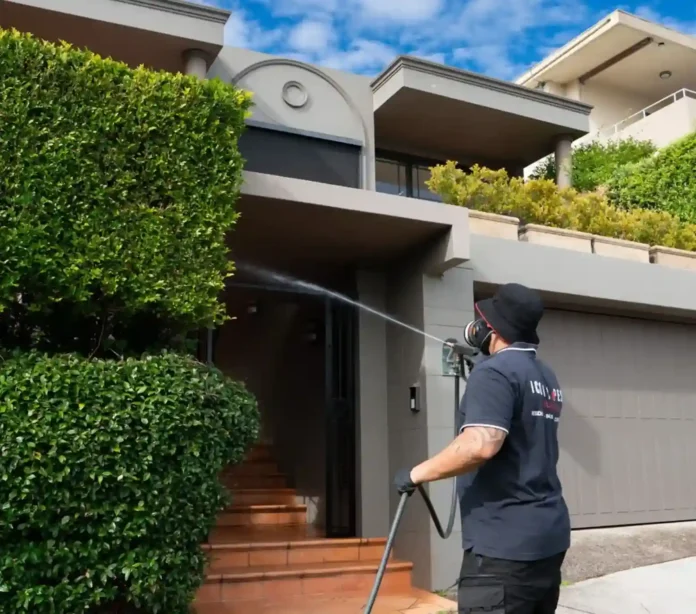Building refurbishments are more popular than ever, especially as homeowners and commercial property owners look to improve aesthetics, energy efficiency, and property value. But too often, refurbishments are seen as surface-level projects—new paint, trendy fixtures, modern interiors—without enough thought given to the backbone of the building itself.
What many don’t realise is that overlooking essential infrastructure like electrical systems, plumbing, or remedial works can not only derail timelines but also result in costly rework or safety hazards. If you’re planning a refurbishment, don’t just focus on the pretty parts. Addressing what’s behind the walls is just as critical—if not more so. Issues such as hidden leaks, wiring faults, or even the need for Rodent Pest Control can quickly escalate if ignored during renovations.
Electrical Systems: Hidden But Critical
Older buildings are still using old or unsafe electrical systems. Although the switches and sockets themselves may seem serviceable, after the walls are removed, the reality is usually an unsound story of wear and tear, overloading, and a failure to meet current safety requirements. Bad wiring is not only wasteful, but it is also life-threatening and endangers lives and property in case of a fire.
Why Is Professional Inspection Necessary?
It is always important to get your building electrically checked by a licensed electrician before the commencement of any refurbishment. This includes:
- Switchboards: Old switchboards could not have safety switches or have the capacity to accommodate current appliances.
- Lighting Systems: Changes such as an energy-efficient lighting upgrade will cut longer-term energy expenses.
- Wiring and Cabling: Bent or aged wiring may result in either power surges or failure of the system.
Headaches will be avoided in the future, starting with professional advice. These certifications mark your modifications on a stable, secure foundation.
Plumbing: Consider Pipe Relining Instead of Excavation
Renovations of old buildings tend to uncover years-old plumbing problems: pipes in poor shape, slow leaks, or root infestation. Pipe deterioration through age or rust or moving foundations or cheap construction can cause pipe deterioration in older properties.
Otherwise, they may cause serious water damage, mould, and even weaknesses. It is important to fix them early before it is too late; still, the conventional approach of digging up and replacing broken pipes is not without its issues.
Traditional Pipe Replacement Problem
The traditional replacement of the pipes involves excavation of walls, floors, or gardens. It is loud and obtrusive and may disturb several parts of a building at a time. This can cost businesses their time and disrupt conventions; for households, it is costly and invasive.
It may also slow down your refurbishment programme and spoil your newly fitted fixtures unless correctly coordinated.
Pipe Relining: The Smarter Choice
Enter pipe relining, a non-invasive method of repairing damaged pipes internally. Plumbers can reline and seal off cracked pipes or leaking pipes using a resin-saturated liner without having to remove them. It’s:
- More rapid and less expensive
- Has little impact on interiors and landscaping
- Long-lasting with a service life of up to 50 years
Be it a residential or a commercial one, pipe relining is the process that guarantees quick and long-term plumbing repairs.
Remedial Works: Strength Before Style
A new paint job or some fancy new cladding may result in an improved outlook on your building, but a dirty job is a dirty job and a band-aid on a deeper problem. Any cosmetic upgrade must be preceded by fixing the underlying structural and waterproofing issues, which may jeopardise the safety and sustainability of your property.
Before You Renovate, What to Look For
A lot of restorations do not pay attention to the manifestations of more extensive harm until it is too late. The relevant issues that should be checked are
- Concrete spalling: Concrete breaking off or crumbling as the steel reinforcement is corroded
- Cracks in the facade: Spaces or breakages that permit ingress of water and are indicators of movement or stress
- Waterproofing failures: Leaks, rising damp, or mould due to breakage of membranes or membrane seals
Not only do these issues decrease the life of your refurb, but they can also cause severe structural damage, occupant discomfort, and even legal exposures.
Remediation Now = Savings Later
Taking care of them first will spare you some costly repairs later on the finishes or the exterior commercial painting. That minor crack on the face of the facade might mean ruined interior walls and mould just a couple of months later, given no attention.
When investing in remedial building services, you invest in the foundation of your project, so to speak. It will also preserve your investment by ensuring that new finishes are not ruined by problems in the underlying areas.
Sync Your Contractors for Seamless Upgrades
Refurbishment can require a wide range of trades involved, e.g., electricians, plumbers, structural crack repair teams, painters, aircon repairs, and interior designers. Coordination is important, as even the most well-thought-out upgrades may as well come back. Hurrying to complete finishes well before would-be important infrastructure work is completed.
Think of the process of laying down new flooring only to see it torn out a week later by electricians who require the cabling. The absence of sequencing causes delays, rework, and waste just in case.
Design the Appropriate Workflow
To make the progress smooth, establish a clear workflow focusing on priorities bestowed on:
- Electrical and plumbing upgrade
- Structural and curative work
- Insulation and waterproofing
- Ornamental (walls, cladding, floors, etc.)
Begin with behind the walls and beneath the surfaces, and do not move onto anything before everything is tested and works.
Communication is the Key.
Maintain communication with all your contractors. Publish the timeline, access requirements, and project plan changes. Conduct a collective meeting or site inspection prior to work, as much as possible. Not only does this prevent duplication since it does not overlap, but it also creates accountability.
You may want to designate a project manager or head contractor to coordinate trade coordination. A key source of contact will avoid confusion, downtime, and quality control throughout the whole process.
Build Right the First Time
Smooth refurbishments cannot be realised without planning. The right coordination of contractors means that every upgrade is based on the previous one, without reversing gains or ruining new materials. It is the distinction between a backdoor facelift and a renovation that lasts.
Conclusion
Before looking at finishes and fixtures, step back and begin your renovation with as solid an inspection list as you can. This means there are no hidden problems, electrical problems, leaky pipes or structural issues that will block your progress in the future.
Neglecting core systems could end up causing rework, delays, or safety issues. That’s why early engagement with specialists is vital. Licensed electricians, experienced plumbers, and remedial building experts will assist you on a solid, safe foundation.



































